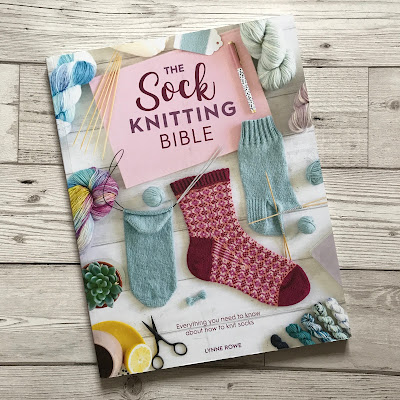The brief was a very specific one: the socks had to be toe-up, cabled and have an afterthought heel. I played around with lots of different ideas: cables large and small, complex and straightforward, before settling on the cable I used in the pattern. I was allowed to choose whatever yarn I wanted for the pattern, so got in contact with Eden Cottage Yarns, whose yarn I had used before for my Seed Head Socks,* and they offered me a skein of Eden Cottage Yarns Tempo in the colourway Misty Woods, a beautiful pale green that really shows off a stitch pattern well.
 |
| Skein of Eden Cottage Yarns Tempo in the colourway Misty Woods |
This project had quite a tight deadline, which meant I had to work with real focus to get the socks knitted in time. I also had to learn to wrangle the cables in the pattern – there are a few ways to create a three-way cable, and they way you work them does seem to affect the finished look, so I had to make sure I was consistent and that I included instructions that were detailed enough for anyone knitting the pattern to get the finished effect to be just as I had intended. I really wish I had taken a photo of the inside of these socks to show how lovely and flat the cables lie on the wrong side, but that will have to wait until I eventually get the sample back.
 |
| Twisting Pathways socks in progress |
I called the socks the Twisting Pathways Socks, and love how they turned out. I had just enough time to photograph the socks on blockers before I posted them off to the publisher. Just look at that beautiful stitch pattern!
 |
| The finished socks |
Want to knit your own Twisting Pathways Socks? The pattern is available now in The Sock Knitting Bible by Lynne Rowe.** The book has also been translated into French, and the Twisting Pathways Socks have made it onto the cover of that edition!
 |
| The Sock Knitting Bible |
Want to add the pattern to your Ravelry queue? You can find the pattern page here: https://www.ravelry.com/patterns/library/twisting-pathways-socks*
 |
| The Twisting Pathways Socks in the book |
*Ravelry link. May affect people with photosensitivity, proceed with caution. The Seed Head Socks are also available on PayHip.
**Affiliate link.








